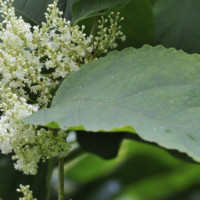
More sellers are now expected to swerve a firm answer when asked about the aggressive plant, which is difficult to eradicate and can cause structural damage to buildings.
Guidance has previously said sellers should state whether the property is affected by Japanese knotweed.
But new explanatory notes on property information forms (TA6) add that if a vendor is unsure about whether the plant exists on the property to indicate ‘not known’.
And that if a seller says there is no knotweed, they “must be certain” no root is present within the ground of the property or within three meters of the property boundary, even if there are no signs above ground.
The more stringent guidelines mean sellers are more likely to say ‘not known’ when asked about the plant.
Buyers who want a firm answer to the question will be obliged to undertake their own enquiries by commissioning a professional Japanese knotweed survey.
The changes will help the legal process in misrepresentation cases where a seller has answered ‘no’, but the weed has been subsequently discovered, according to Environet managing director Nic Seal.
In some cases, owners have sued previous vendors after finding the plant on the property.
Seal added: “With visual surveys, no reputable knotweed specialist could certify that no rhizome is present in the ground, reinforcing the message that the safe bet is to always answer ‘don’t know’, except of course where the answer should be ‘Yes’.
“I therefore welcome the Law Society’s revisions to the TA6 form guidance made last week.”
















